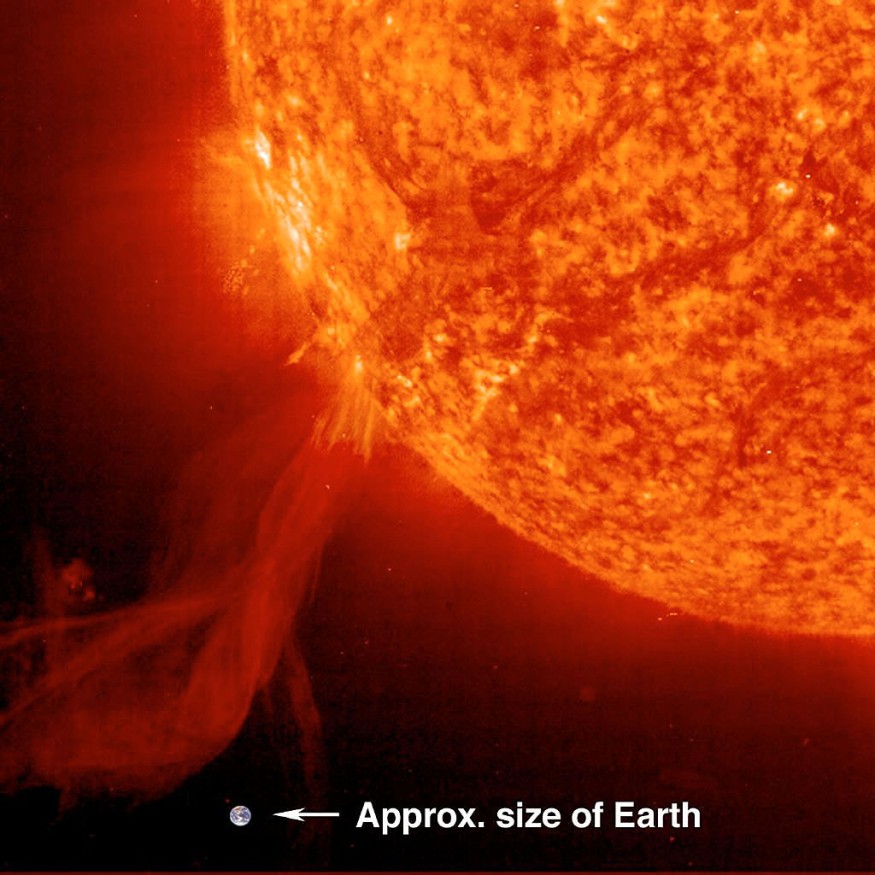On Tuesday, a major eruption occurred on the Sun's far side that generated one of the largest recorded coronal mass ejections, or CME, in recent history.
Largest Coronal Mass Ejection Produced by Massive Explosion on the Far Side of the Sun

Jim Todd, an Oregon Museum of Science and Industry Director of Space Science Education in a statement, told KOIN 6 News that the planet dodged a bullet. He says that a very large CME, or a major storm on the Sun, happened on the far side of our star which was quite fortunate for Earth since it was an enormous explosion.
Although the CME is not expected by experts to hit Earth, Todd explains that based on images captured by seismic maps and satellites, the size alone of the eruption had people buzzing. Todd explains that experts estimate that the flare stretched about 400,000 kilometers, far greater than the distance between the Moon and Earth.
He explains that CMEs of this magnitude are typically caused when positive and negative charges within an electromagnetic field contradict, which results in a powerful discharge, otherwise known as sunspots. Sun flares aren't at all independently surprising, however, the scale of Tuesday's explosion would pose a serious threat on our planet if we were in the direct line of fire.
According to Todd, the reason why experts are worried and why the subject must be brought to light is that if the storm was in fact headed for earth, not only would it cause a massive global aurora effect, but it would also represent problems similar to the Carrington Event of 1859.
Also known as a Solar Superstorm, the Carrington Event of 1859 was caused by a massive solar flare that bombarded Earth with electrified gas and subatomic particles that wreaked havoc on telegraph networks, according to History.
As an aftermath of the Solar Superstorm, telegraph lines across Northern America were inoperable on August 28 as the first successive solar storms struch the planet. According to the telegraph manager E.W. Culgan, the resulting currents that flowed through the telegraph wires were so powerful that the platinum contacts were melting with streams of fire pouring from the circuits.
Tuesday's CME; Earth's Near-Miss Experience
Todd explains that if Tuesday's CME was directed towards Earth it would have easily knocked out satellites, power grids, cell phones, and more. He adds that we are even more vulnerable to these storms today because of the advancements and dependency of our way of life to digital technology.
Luckily scientists are continuously monitoring these types of solar activities. And basing off of data tracking, Todd explains that experts can predict trends in solar activity which makes us better prepared for impact if ever needed.
He continues that based on the 11-year cycle pattern that contracts and expands, we're just starting to see the peak, where more activity can be foreseen within the next couple of years.
RELATED ARTICLE : More Giant Flares in the Near Future? Sun Eruption Unceasingly Happening All Month
Check out more news and information on Sun in Science Times
© 2025 ScienceTimes.com All rights reserved. Do not reproduce without permission. The window to the world of Science Times.











